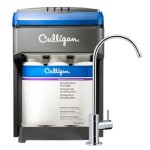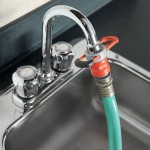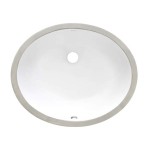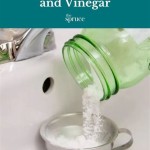How To Get Rust Off Your Kitchen Sink
Rust stains on a kitchen sink are an unsightly nuisance, but thankfully, they can often be removed with readily available household items. The method for rust removal depends primarily on the sink material: stainless steel, porcelain, or cast iron. This article will explore effective techniques for each type of sink.
Removing Rust from Stainless Steel Sinks
Stainless steel is generally rust-resistant but can develop surface rust stains from iron deposits in water or contact with rusty objects. For minor rust stains, a gentle abrasive cleaner is often sufficient. Baking soda provides a mild abrasive action without scratching the sink's surface. Create a paste of baking soda and water, apply it to the affected area, and gently rub with a soft cloth or sponge. Rinse thoroughly with water.
For more stubborn rust stains, commercial rust removers designed specifically for stainless steel are recommended. Always follow the manufacturer's instructions carefully. Avoid using harsh chemicals like bleach or oven cleaner, as these can damage the stainless steel finish.
Preventing future rust stains on stainless steel involves keeping the sink clean and dry. Wipe down the sink after each use and avoid leaving standing water or wet items in the basin. Periodically applying a protective coating of stainless steel polish can also help prevent rust formation.
Removing Rust from Porcelain Sinks
Porcelain sinks are coated with a durable enamel layer that can chip or crack, exposing the underlying metal to rust. For surface rust stains on the porcelain itself, a similar approach to stainless steel can be used. A paste of baking soda and water or a mild abrasive cleaner can be gently applied and rubbed onto the stain. Avoid using abrasive scouring pads, which can scratch the porcelain finish.
For deeper rust stains where the porcelain has chipped, exposing the underlying metal, a more intensive approach is needed. A commercial rust remover designed for porcelain or enamel surfaces can be applied following the manufacturer's instructions. If the chip is significant, professional repair or resurfacing may be necessary.
Preventing rust on porcelain sinks involves careful handling to prevent chipping and cracking. Avoid dropping heavy objects into the sink. Regular cleaning with mild detergents will help maintain the porcelain's protective layer.
Removing Rust from Cast Iron Sinks
Cast iron sinks are typically coated with enamel to protect against rust. Similar to porcelain sinks, rust on cast iron often occurs where the enamel has chipped, exposing the underlying metal. For minor surface rust on the enamel, a paste of baking soda and water or a mild abrasive cleaner can be used. Gentle rubbing with a soft cloth or sponge is recommended. Avoid using steel wool or abrasive scouring pads, as these can damage the enamel finish.
For rust on exposed cast iron, fine-grit sandpaper or steel wool can be used to carefully remove the rust. Start with a finer grit and progress to a coarser grit if necessary. Once the rust is removed, the area should be thoroughly rinsed and dried. A touch-up paint designed for porcelain or enamel repairs can be applied to protect the exposed metal and restore the sink's appearance.
Preventing rust on cast iron sinks requires keeping the enamel coating intact. Avoid dropping heavy or sharp objects in the sink. Clean the sink regularly with mild detergents and avoid using harsh chemicals. If chips or cracks appear in the enamel, address them promptly with touch-up paint to prevent rust formation.
General Rust Removal Tips
Regardless of the sink material, certain best practices apply when removing rust. Always test any cleaning solution or method in an inconspicuous area first to ensure it does not damage the sink's finish. Wear gloves to protect your hands during the cleaning process. Work in a well-ventilated area, particularly when using commercial rust removers. Finally, thorough rinsing and drying are crucial after any rust removal procedure to prevent further rust formation.
Other Rust Removal Options
Beyond the common household methods, other options exist for tackling tough rust stains. A paste of lemon juice and salt can be an effective natural rust remover. Apply the paste to the rust, let it sit for a few hours, then scrub gently and rinse. Similarly, a solution of white vinegar and salt can be used. Soak a cloth in the solution, place it over the rust stain, and leave it for several hours before scrubbing and rinsing.
Commercial rust removers containing oxalic acid are also available. These are potent solutions and should be used with caution, following the manufacturer's instructions meticulously. Always prioritize safety and proper ventilation when working with stronger chemical agents.
For extensive or persistent rust problems, professional cleaning or restoration services are often the most effective solution. Professionals possess specialized tools and expertise to remove rust without damaging the sink material and can provide advice on preventative measures.

Rust In Your Stainless Steel Sink Duncan S Creative Kitchens

How To Clean A Stainless Steel Sink And Your Drain Too

How To Remove Rust From Stainless Steel Sink Pressure And Steam

How To Remove Rust From Kitchen Sink Drain A Comprehensive Guide Arcora Faucets

Kitchen Cleaning How To Remove Rust Stains From A Faucet

Kitchen Cleaning How To Clean Rust In A Sink Youtube

Rust In Your Stainless Steel Sink Duncan S Creative Kitchens

How To Remove Rust From Stainless Steel Sinks Ruvati Usa

How To Remove Rust From Stainless Steel Sinks Bar Keepers Friend

How To Remove Rust From Kitchen Sink With Everyday Home Items Livecopper







